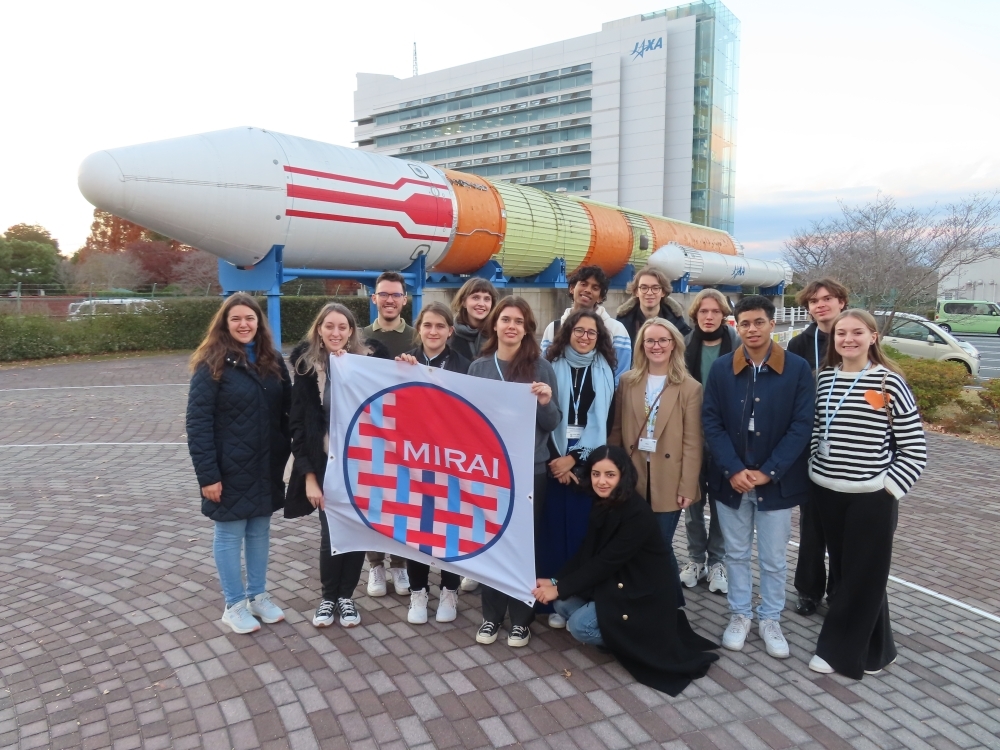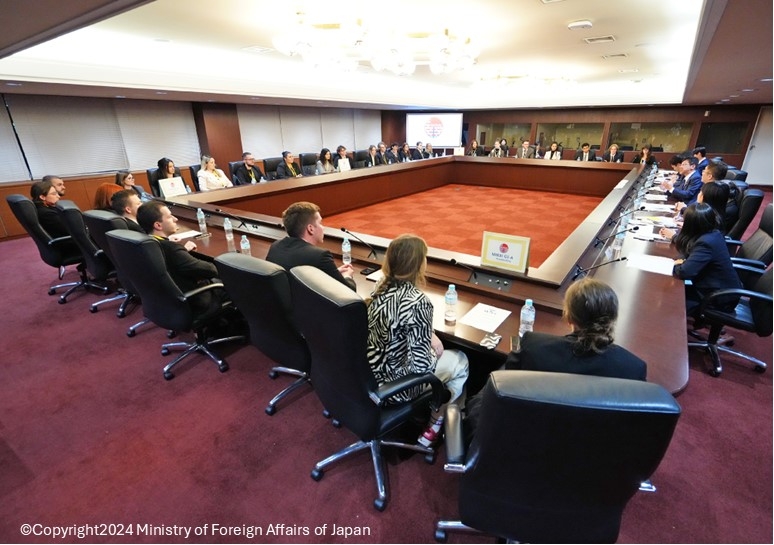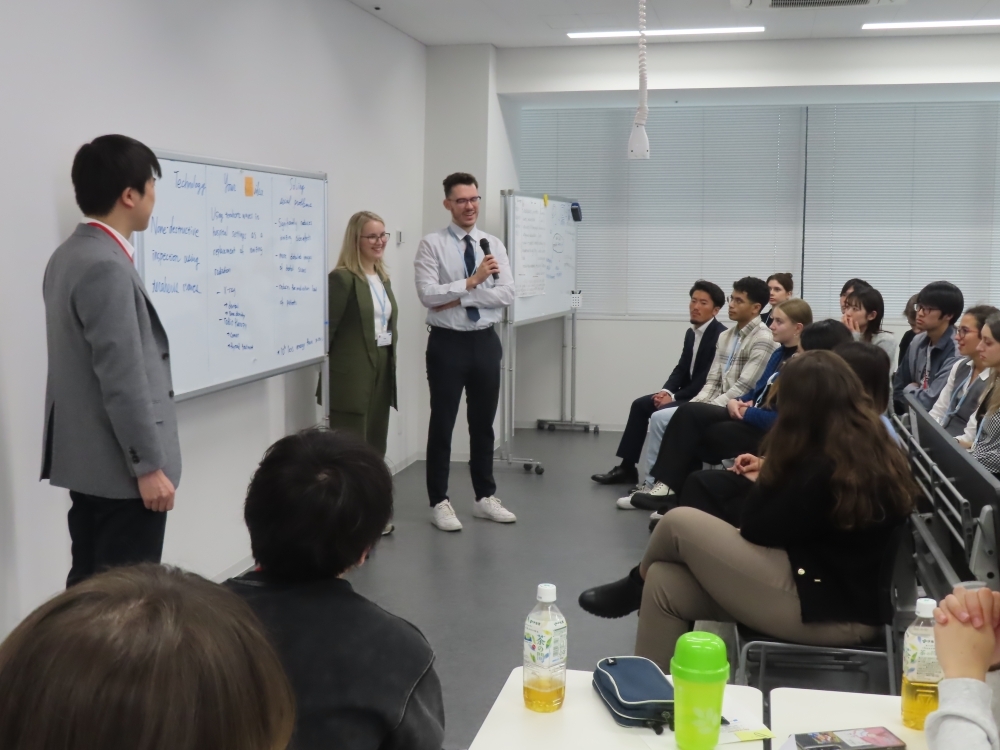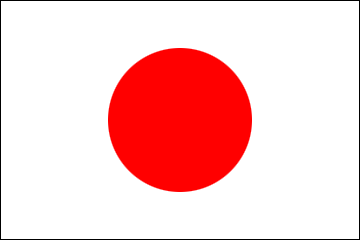MIRAI Program Personal Experiences (Una Mattý Jensdóttir)
2025/6/3



This December, I had the privilege of traveling to Japan to participate in the MIRAI program, organized by the Ministry of Foreign Affairs of Japan and the Japan International Cooperation Center (JICE). As part of the Science and Technology group, I joined 14 other participants from across Europe to explore Japan’s advancements in research and innovation while immersing ourselves in its rich cultural heritage.
The program began in Tokyo with an orientation that set the tone for an exciting week ahead. On the second day, we visited Shibaura Institute of Technology (SIT), where we toured their laboratories, explored the campus, and collaborated with students to brainstorm ideas for advancing technology. The innovative projects we saw, including silica membranes for hydrogen separation and terahertz wave applications for inspecting concrete integrity, were incredibly inspiring and highlighted Japan’s forward-thinking approach to solving global challenges.
On the third day, we visited the Panasonic Center, where we explored their diverse sustainability-focused innovations. From solar panels and electric vehicles to delivery robots and materials designed to replace plastics, every innovation reflected their commitment to building a sustainable future. Later that day, we headed to the RIKEN Center for Brain Science, where we learned about groundbreaking research in nerve growth and development. It was fascinating to see how collaboration across disciplines fosters deeper insights and innovative discoveries.
We then traveled to the Ibaraki Prefecture, where the next two days were packed with exciting experiences. At Cyberdyne, we were introduced to lifechanging assistive technologies such as the HAL Robotsuit, which aids mobility and supports heavy lifting, and lumbar support devices designed for healthcare professionals, warehouse workers, and individuals with mobility challenges. Trying out these devices firsthand was unforgettable and demonstrated how engineering can transform lives.
At the JAXA Tsukuba Space Center, we toured the facility, saw the Mission Control Room in action, and learned about Japan’s space exploration efforts. Witnessing JAXA’s history and the rigorous preparation of astronauts was truly inspiring, offering a glimpse into Japan’s contributions to humanity’s journey beyond Earth.
Our cultural immersion continued on Day 5, where we painted traditional lanterns and visited the Ibaraki Prefecture Archives and History Museum. Painting lanterns was a beautiful experience that showcased the meticulous craftsmanship behind traditional Japanese art. At the museum, I had the unique opportunity to try on a Juni-Hitoe, a 12-layered kimono, and learn about the historical significance of this exquisite attire.
The program concluded back in Tokyo with a visit to the Asakusa Shrine, followed by a reporting session at the Ministry of Foreign Affairs (MOFA), where we had the honor of meeting with Mr. MATSUMOTO Hisashi, Japan’s Vice-Minister for Foreign Affairs.
Reflecting on this incredible journey, I am deeply grateful to the Japanese government for this once-in-a-lifetime opportunity to participate in the MIRAI program. The experience expanded my understanding of science and technology, enriched my appreciation for Japanese culture, and left me inspired by the hospitality, innovation, and respect that are embedded in everyday life in Japan. This program has been transformative, and I will carry the lessons I’ve learned into my future studies and career, aspiring to contribute to global advancements in science and technology.
The program began in Tokyo with an orientation that set the tone for an exciting week ahead. On the second day, we visited Shibaura Institute of Technology (SIT), where we toured their laboratories, explored the campus, and collaborated with students to brainstorm ideas for advancing technology. The innovative projects we saw, including silica membranes for hydrogen separation and terahertz wave applications for inspecting concrete integrity, were incredibly inspiring and highlighted Japan’s forward-thinking approach to solving global challenges.
On the third day, we visited the Panasonic Center, where we explored their diverse sustainability-focused innovations. From solar panels and electric vehicles to delivery robots and materials designed to replace plastics, every innovation reflected their commitment to building a sustainable future. Later that day, we headed to the RIKEN Center for Brain Science, where we learned about groundbreaking research in nerve growth and development. It was fascinating to see how collaboration across disciplines fosters deeper insights and innovative discoveries.
We then traveled to the Ibaraki Prefecture, where the next two days were packed with exciting experiences. At Cyberdyne, we were introduced to lifechanging assistive technologies such as the HAL Robotsuit, which aids mobility and supports heavy lifting, and lumbar support devices designed for healthcare professionals, warehouse workers, and individuals with mobility challenges. Trying out these devices firsthand was unforgettable and demonstrated how engineering can transform lives.
At the JAXA Tsukuba Space Center, we toured the facility, saw the Mission Control Room in action, and learned about Japan’s space exploration efforts. Witnessing JAXA’s history and the rigorous preparation of astronauts was truly inspiring, offering a glimpse into Japan’s contributions to humanity’s journey beyond Earth.
Our cultural immersion continued on Day 5, where we painted traditional lanterns and visited the Ibaraki Prefecture Archives and History Museum. Painting lanterns was a beautiful experience that showcased the meticulous craftsmanship behind traditional Japanese art. At the museum, I had the unique opportunity to try on a Juni-Hitoe, a 12-layered kimono, and learn about the historical significance of this exquisite attire.
The program concluded back in Tokyo with a visit to the Asakusa Shrine, followed by a reporting session at the Ministry of Foreign Affairs (MOFA), where we had the honor of meeting with Mr. MATSUMOTO Hisashi, Japan’s Vice-Minister for Foreign Affairs.
Reflecting on this incredible journey, I am deeply grateful to the Japanese government for this once-in-a-lifetime opportunity to participate in the MIRAI program. The experience expanded my understanding of science and technology, enriched my appreciation for Japanese culture, and left me inspired by the hospitality, innovation, and respect that are embedded in everyday life in Japan. This program has been transformative, and I will carry the lessons I’ve learned into my future studies and career, aspiring to contribute to global advancements in science and technology.
